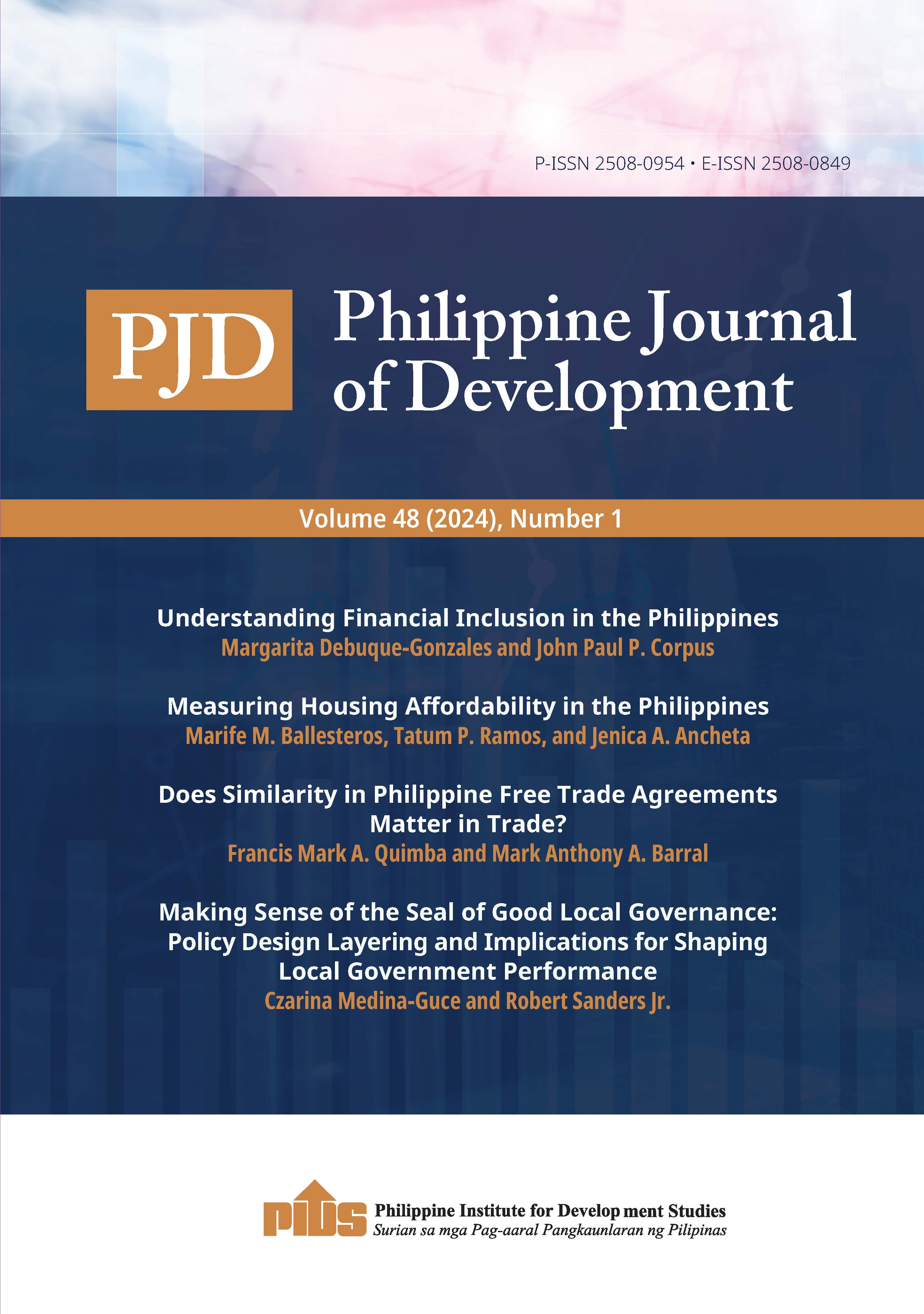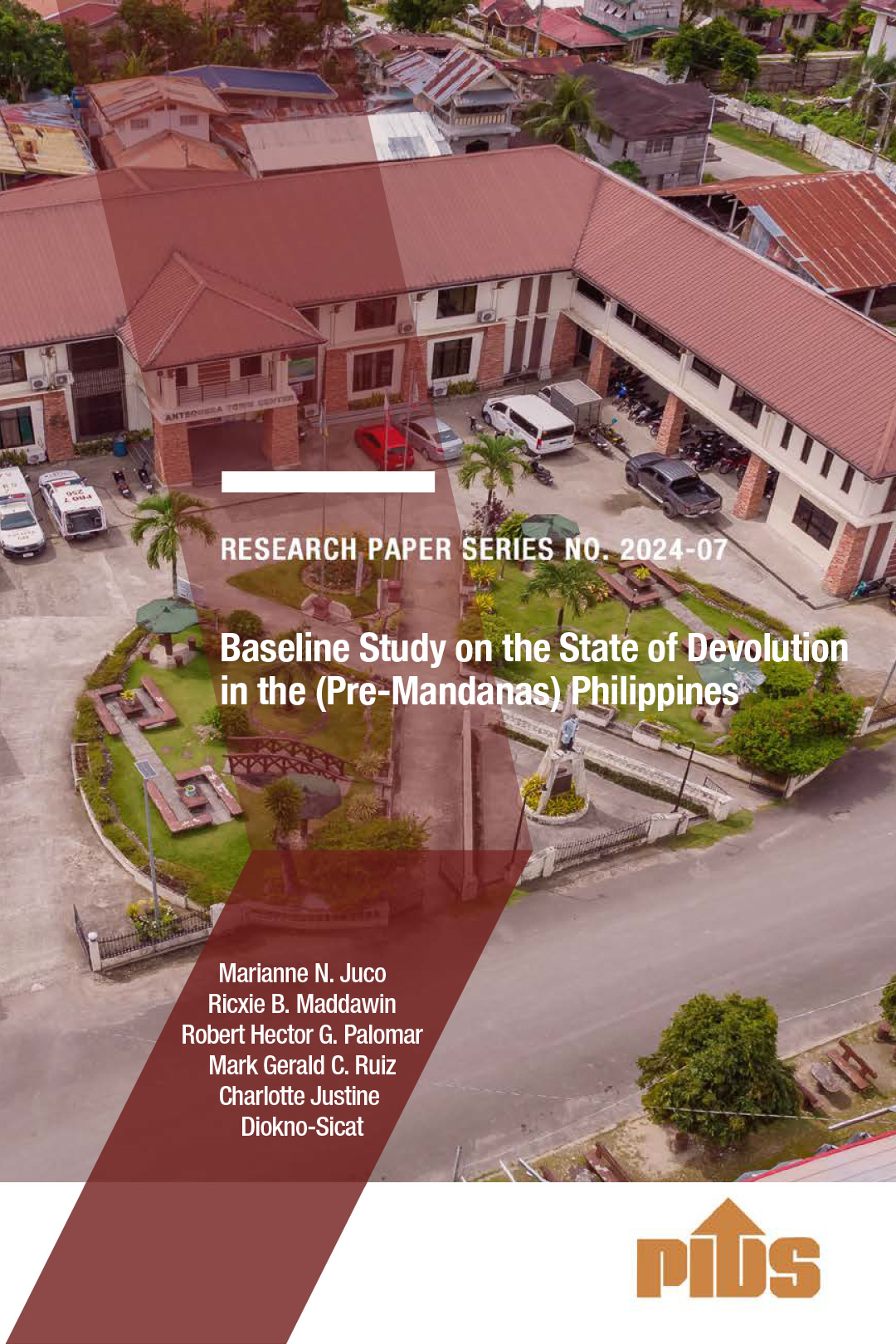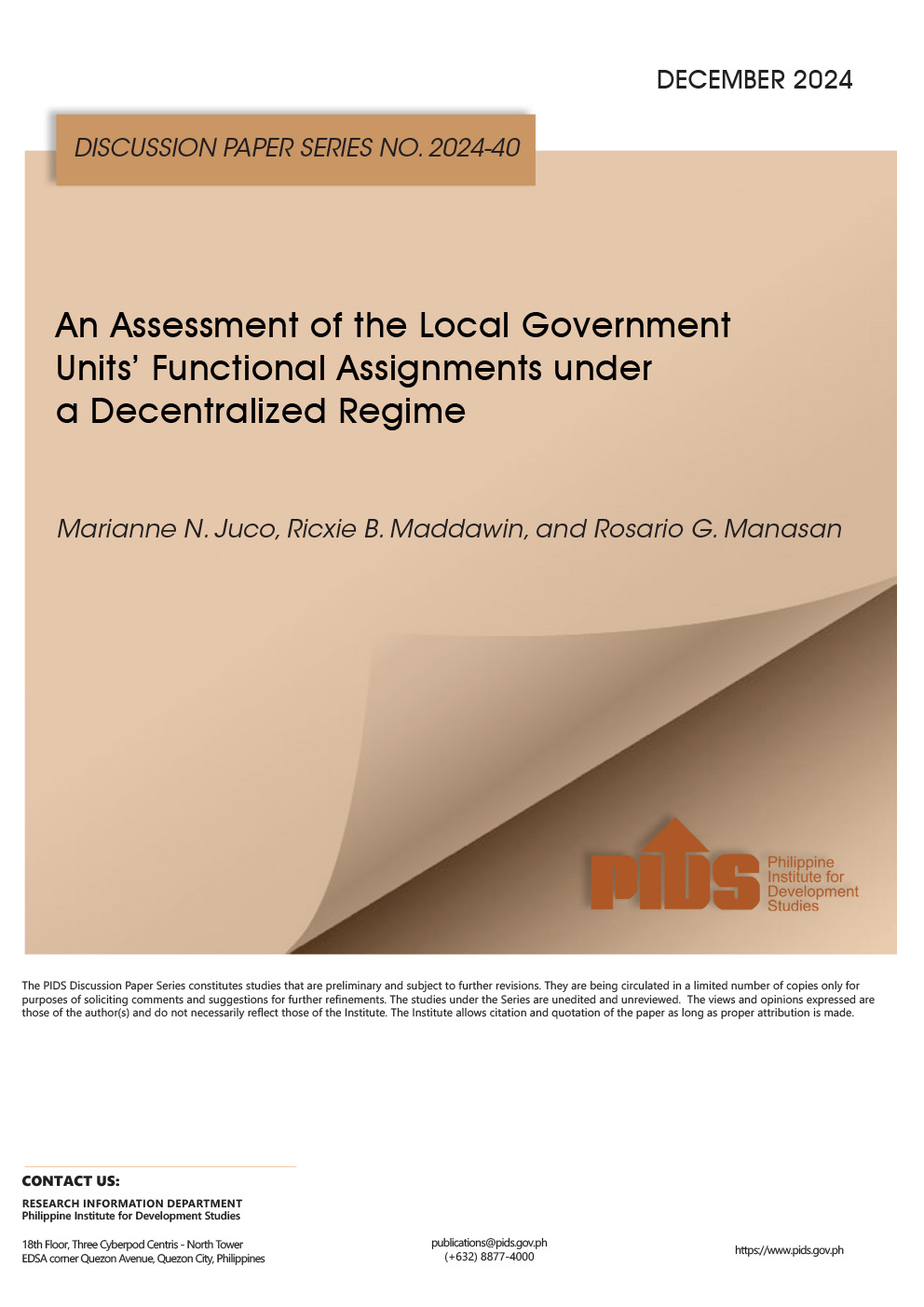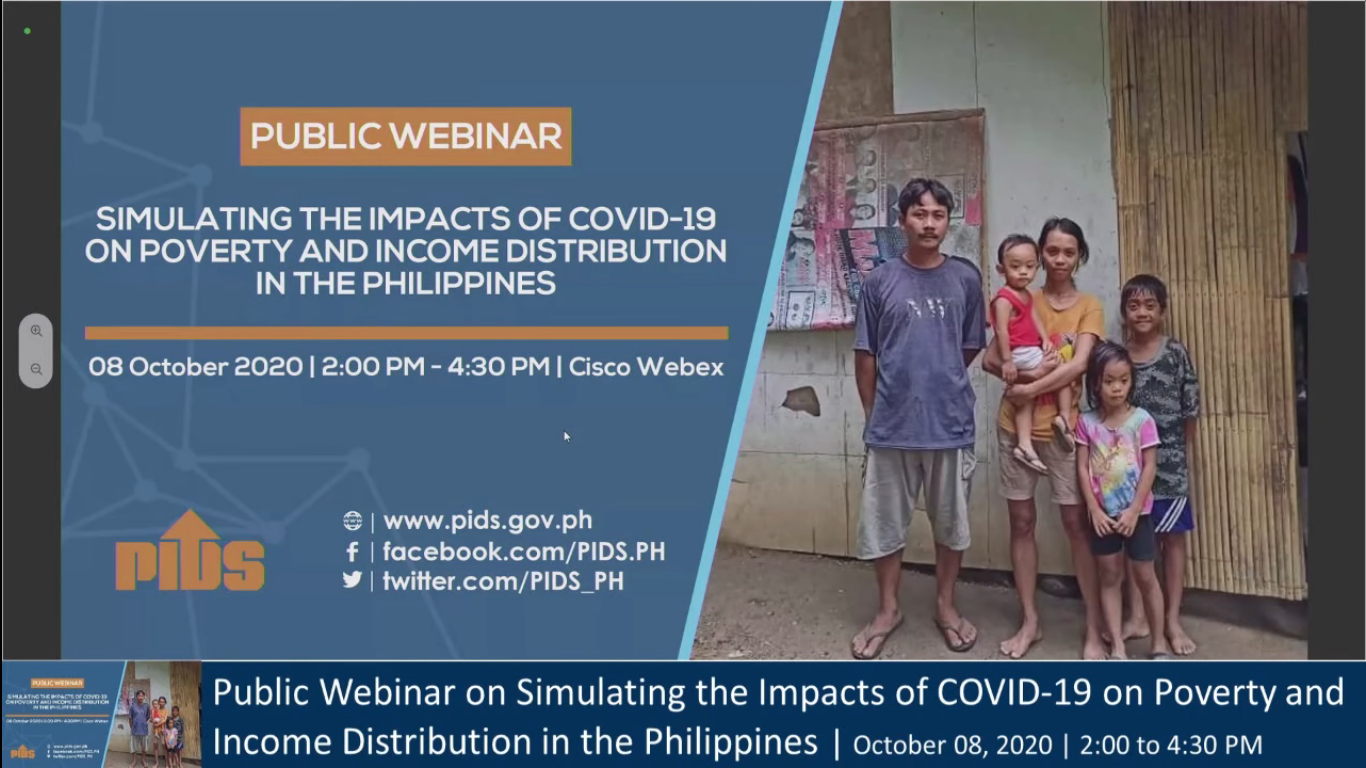
There is a need to revisit the minimum local government income requirement to create provinces and municipalities in the Philippines.
This was highlighted in a recent study of state think tank Philippine Institute for Development Studies (PIDS) that looked into how the fiscal viability of local government units (LGU) could be improved. The results of the study also aimed to contribute to the Philippine Development Plan 2017-2022 goal of “Enhancing the Social Fabric (Malasakit)”.
According to the study, an LGU is “viable and deemed capable” in delivering devolved basic services if it has sufficient income vis-à-vis its population and land area.
The latter two variables are the same factors used to determine the amount of intergovernmental fiscal transfers an LGU receives. For population, it was shown to be “positively associated with both local source revenues and expenditures”.
However, authors PIDS Research Fellow Charlotte Justine Diokno-Sicat and Visiting Research Fellow Vicente Paqueo revealed that “the current mandated income levels for provinces and municipalities covered only about 11 percent and 1 percent of average local expenditures in the past decade, respectively.”
They noted that this is far from the Local Government Code (LGC) aspiration of self-reliant local governments that could provide the essential services commensurate to the population.
Further, the study results also showed that the current income requirement to create a municipality is “largely insufficient to cover the organizational costs of an LGU and estimated fiscal gaps in key infrastructure areas”.
Since 2019, national government oversight agencies, such as the National Economic and Development Authority, and the Senate of the Philippines have expressed the need for a study on the fiscal viability of LGUs.
Given the study’s findings, Sicat and Paqueo expressed the need to revise the minimum LGU income requirements to minimize the number of LGUs struggling to deliver devolved basic services.
“Increasing the minimum LGU income requirements would make it more challenging to become an LGU, thus reducing fragmentation issues,” the authors pointed out.
Another option, they said, is to redefine average income to be those locally raised to make it more stringent for LGUs to level up.
To do these, the authors urged policymakers to amend Sections 442 and 461 of the LGC to increase the minimum income requirement allowing the creation of municipalities and provinces.
For existing municipalities, the government can “encourage amalgamation or cooperation across different LGUs for certain functions that have spillover effects”. This, according to them, could be incentivized, as what other countries that have experienced overfragmentation did.
The authors also proposed using the study’s estimates of the LGU human resource complement “as a starting point in determining the income level wherein a municipality could be deemed fiscally viable”. ###
This press release is based on the PIDS discussion paper titled “An Assessment of the Criteria Used in the Determination of Philippine LGU Fiscal Viability”.
This was highlighted in a recent study of state think tank Philippine Institute for Development Studies (PIDS) that looked into how the fiscal viability of local government units (LGU) could be improved. The results of the study also aimed to contribute to the Philippine Development Plan 2017-2022 goal of “Enhancing the Social Fabric (Malasakit)”.
According to the study, an LGU is “viable and deemed capable” in delivering devolved basic services if it has sufficient income vis-à-vis its population and land area.
The latter two variables are the same factors used to determine the amount of intergovernmental fiscal transfers an LGU receives. For population, it was shown to be “positively associated with both local source revenues and expenditures”.
However, authors PIDS Research Fellow Charlotte Justine Diokno-Sicat and Visiting Research Fellow Vicente Paqueo revealed that “the current mandated income levels for provinces and municipalities covered only about 11 percent and 1 percent of average local expenditures in the past decade, respectively.”
They noted that this is far from the Local Government Code (LGC) aspiration of self-reliant local governments that could provide the essential services commensurate to the population.
Further, the study results also showed that the current income requirement to create a municipality is “largely insufficient to cover the organizational costs of an LGU and estimated fiscal gaps in key infrastructure areas”.
Since 2019, national government oversight agencies, such as the National Economic and Development Authority, and the Senate of the Philippines have expressed the need for a study on the fiscal viability of LGUs.
Given the study’s findings, Sicat and Paqueo expressed the need to revise the minimum LGU income requirements to minimize the number of LGUs struggling to deliver devolved basic services.
“Increasing the minimum LGU income requirements would make it more challenging to become an LGU, thus reducing fragmentation issues,” the authors pointed out.
Another option, they said, is to redefine average income to be those locally raised to make it more stringent for LGUs to level up.
To do these, the authors urged policymakers to amend Sections 442 and 461 of the LGC to increase the minimum income requirement allowing the creation of municipalities and provinces.
For existing municipalities, the government can “encourage amalgamation or cooperation across different LGUs for certain functions that have spillover effects”. This, according to them, could be incentivized, as what other countries that have experienced overfragmentation did.
The authors also proposed using the study’s estimates of the LGU human resource complement “as a starting point in determining the income level wherein a municipality could be deemed fiscally viable”. ###
This press release is based on the PIDS discussion paper titled “An Assessment of the Criteria Used in the Determination of Philippine LGU Fiscal Viability”.











